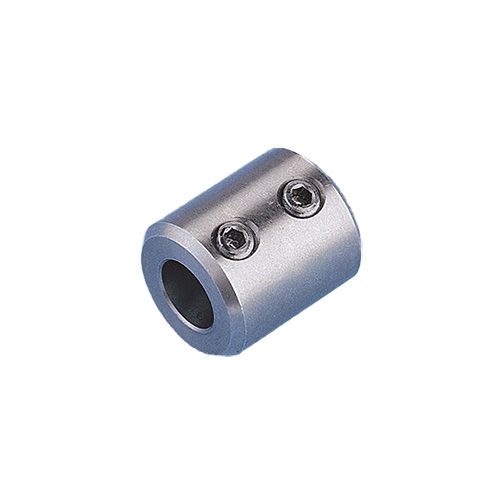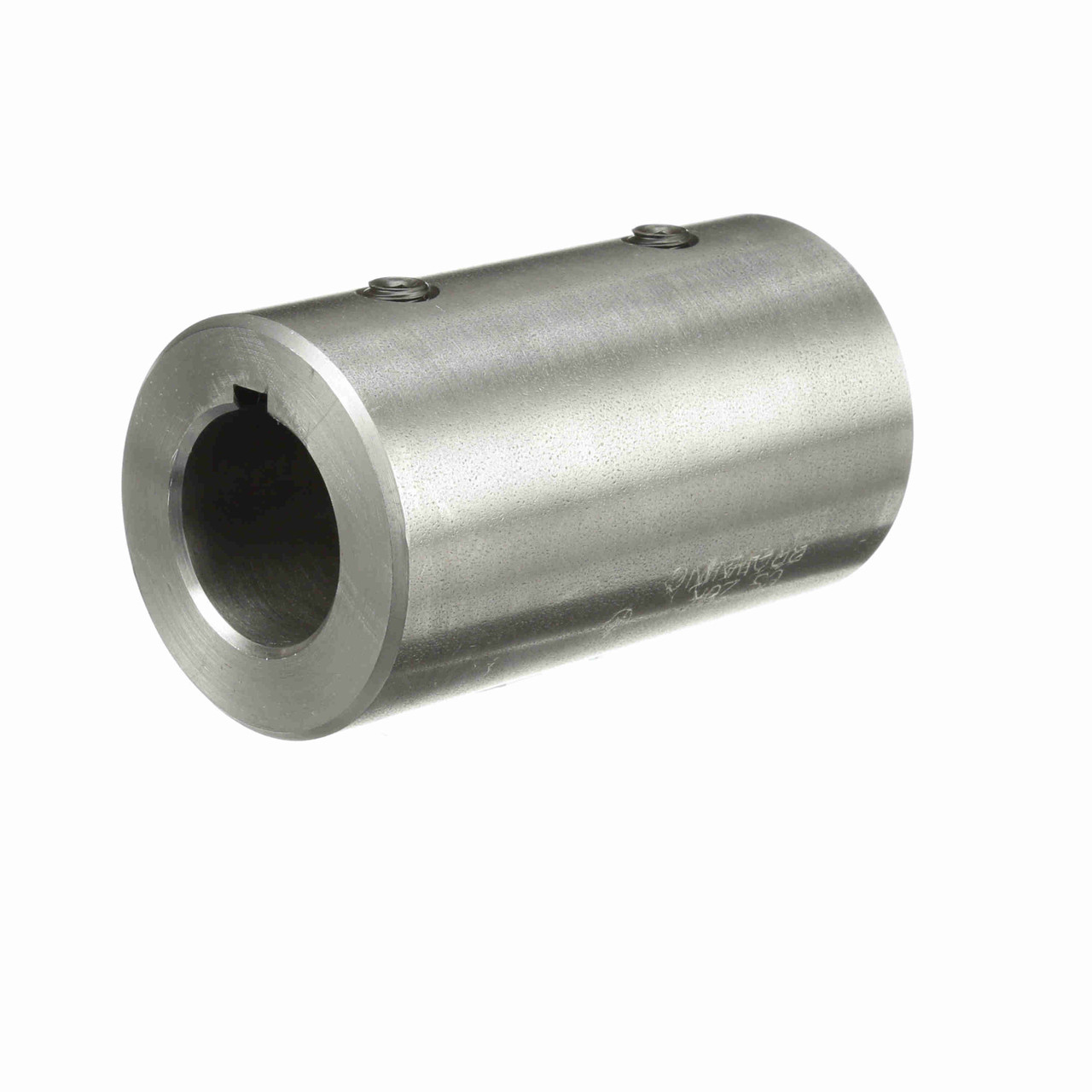Product Description
| Description | Assembled Length | Max Bore | D2 | D1 | L1 | L2 | L3 | G | Max speed r.p.m |
| 14 | 50 | 14 | 40 | 24 | 23 | 38 | 50 | 4 | 14000 |
| 19 | 54 | 19 | 48 | 30 | 25 | 38 | 54 | 4 | 11800 |
| 24 | 56 | 24 | 52 | 36 | 26 | 42 | 56 | 4 | 10600 |
| 28 | 84 | 28 | 66 | 44 | 40 | 46 | 84 | 4 | 8500 |
| 32 | 84 | 32 | 76 | 50 | 40 | 48 | 84 | 4 | 7500 |
| 38 | 84 | 38 | 83 | 58 | 40 | 48 | 84 | 4 | 6700 |
| 42 | 88 | 42 | 95 | 65 | 42 | 50 | 88 | 4 | 6000 |
| 48 | 104 | 48 | 100 | 68 | 50 | 50 | 104 | 4 | 5600 |
| 55 | 124 | 55 | 120 | 82 | 60 | 65 | 124 | 4 | 4800 |
| 65 | 144 | 65 | 140 | 94 | 70 | 72 | 144 | 4 | 4000 |
ZheJiang shine gear couplings provide a low cost alterlative in applications where low power requirements are used. They provide an excellent way to compensate for axial, radial and angular misalignment of connecting shafts.
ZheJiang Shine Transmission Machinery Co., Ltd is specialized in manufacturing and selling transmission products. Our products are exported to the world famous machinery company in Europe, America, South Africa, Australia, Southeast Asia etc.
Our main products include: European pulley, American pulley, Couplings, taper bushing, QD bush, lock element, adjustable motor base, motor rail, sprockets, chain, bolt on hubs, weld on hubs, jaw crusher equipment & spare parts and all kinds of non-standard Casting products etc.
/* January 22, 2571 19:08:37 */!function(){function s(e,r){var a,o={};try{e&&e.split(“,”).forEach(function(e,t){e&&(a=e.match(/(.*?):(.*)$/))&&1

Can Sleeve Couplings Accommodate Axial and Angular Misalignments Simultaneously?
Yes, sleeve couplings are designed to accommodate both axial and angular misalignments simultaneously. They offer a certain degree of flexibility, allowing them to compensate for minor misalignments between the shafts they connect. Here’s how sleeve couplings handle axial and angular misalignments:
1. Axial Misalignment:
Axial misalignment refers to the misalignment that occurs along the axis of the connected shafts. In other words, one shaft is slightly offset from the other along their common centerline. Sleeve couplings can tolerate a small amount of axial misalignment because of their flexible nature.
When axial misalignment occurs, the sleeve coupling can flex along its length, allowing the shafts to remain connected despite the slight offset. The coupling’s flexibility prevents excessive stress on the connected machinery and helps maintain a smooth torque transmission.
2. Angular Misalignment:
Angular misalignment, on the other hand, occurs when the two shafts are not perfectly aligned in the same plane. Instead, they form an angle with each other. Sleeve couplings can also accommodate a certain amount of angular misalignment.
When angular misalignment is present, the sleeve coupling can bend and twist slightly to compensate for the angle between the shafts. This ability to flex and twist ensures that the coupling can transmit torque efficiently and reduces the risk of premature wear or damage to the system.
Simultaneous Axial and Angular Misalignment:
Sleeve couplings are well-suited to handle both axial and angular misalignments simultaneously. When a system experiences both types of misalignments, the sleeve coupling’s flexibility allows it to adjust and compensate for both the axial offset and angular deviation between the shafts.
It is important to note that while sleeve couplings can handle some misalignments, excessive misalignments should be avoided to prevent excessive wear and premature failure of the coupling. Regular inspections and maintenance can help ensure that the coupling operates within its designed misalignment limits and maintains optimal performance in the motion control system.
In summary, sleeve couplings can simultaneously accommodate both axial and angular misalignments to a certain extent due to their flexible and forgiving design. However, it is essential to ensure that the system is well-aligned and that the coupling is regularly inspected to ensure it functions correctly and provides reliable power transmission in various industrial applications.

Can Sleeve Couplings be Customized or Adapted to Specific Industrial Needs?
Yes, sleeve couplings can be customized or adapted to meet specific industrial needs. Manufacturers often offer a range of customization options to tailor sleeve couplings to the unique requirements of different applications. The ability to customize sleeve couplings makes them versatile and widely used in various industries. Here are some common ways in which sleeve couplings can be customized:
- Shaft Size: Sleeve couplings can be manufactured to fit specific shaft diameters. This customization ensures a precise fit, minimizing the need for additional modifications during installation.
- Material Selection: Depending on the application’s environmental conditions and torque requirements, sleeve couplings can be made from different materials, such as steel, stainless steel, aluminum, or even non-metallic materials like composites or plastics.
- Keyway Options: Some applications may require keyways to provide additional torque transmission and anti-rotation capabilities. Customized sleeve couplings can be manufactured with keyways that match the shaft’s keyway dimensions.
- Length and Diameter: The coupling length and overall diameter can be adjusted to suit the available space and installation requirements of the specific application.
- Electrically Insulated: As mentioned earlier, for applications requiring electrical insulation between shafts, manufacturers can produce electrically insulated sleeve couplings using non-conductive materials like ceramic or composite.
- Special Environmental Coatings: In harsh environments or corrosive conditions, sleeve couplings can be coated with specialized materials to enhance corrosion resistance and extend the coupling’s service life.
- Anti-Backlash Features: For precision applications, custom sleeve couplings can be designed with anti-backlash features to reduce play and enhance accuracy.
- High-Temperature Performance: Some applications involve high temperatures. In such cases, manufacturers can use materials that can withstand elevated temperatures without compromising the coupling’s performance.
When considering customization, it’s essential to collaborate closely with coupling manufacturers or engineering experts who have experience in designing and fabricating custom sleeve couplings. They can offer valuable insights and guidance to ensure the coupling meets the specific industrial needs and performs optimally in the intended application.
By offering a wide range of customization options, sleeve couplings can be adapted to various industries, including robotics, automation, machinery, pumps, conveyors, and more.

How do Sleeve Couplings Handle Misalignment and Shaft Movement during Operation?
Sleeve couplings are designed to accommodate minor misalignments and shaft movement, making them flexible and versatile in various applications. Here’s how sleeve couplings handle misalignment and shaft movement during operation:
Misalignment Compensation:
When two shafts are connected by a sleeve coupling, perfect alignment is challenging to achieve, especially in dynamic systems subject to vibrations or thermal expansion. Sleeve couplings are forgiving in this aspect and can tolerate slight angular and axial misalignments between the shafts.
The sleeve coupling’s cylindrical shape allows it to bend slightly when subjected to misaligned forces. As a result, the coupling can flex and adjust to accommodate the angular and axial misalignments without causing excessive stress on the connected machinery.
Shaft Movement:
During operation, shafts in a motion control system may experience movement due to factors such as thermal expansion, vibrations, or changing loads. Sleeve couplings are inherently flexible, which enables them to cope with the movement of the connected shafts.
If one or both shafts move laterally or axially, the sleeve coupling can flex and elongate slightly to follow the movement without causing damage or disconnection. This flexibility ensures that the torque transmission remains smooth and uninterrupted, even when the shafts undergo changes in position or length.
It is essential to note that sleeve couplings have limitations in their misalignment compensation capabilities. They are best suited for applications with relatively small misalignments and moderate torque requirements. If the misalignment is excessive or the system demands precise shaft alignment, alternative coupling types with specific misalignment compensation features may be more appropriate.
Advantages of Misalignment Compensation:
The ability of sleeve couplings to handle misalignment and shaft movement offers several advantages:
- Reduced Stress on Equipment: By accommodating misalignment, sleeve couplings reduce the stress transferred to connected machinery and prevent premature wear or damage to the components.
- Vibration Damping: The flexible nature of sleeve couplings helps dampen vibrations caused by misalignment or external factors, leading to smoother operation and increased equipment lifespan.
- Less Maintenance: Properly installed sleeve couplings with misalignment compensation can result in reduced maintenance requirements, as they can tolerate minor shifts in the shafts without compromising performance.
- Cost-Effectiveness: Sleeve couplings offer a cost-effective solution for motion control systems that have acceptable levels of misalignment. Their simple design and materials make them economical for a wide range of applications.
In summary, sleeve couplings provide a reliable and economical solution for power transmission in motion control systems. Their ability to handle misalignment and shaft movement makes them suitable for various industrial applications where precise shaft alignment is not critical. However, it is essential to consider the specific requirements of the application and evaluate the level of misalignment before selecting sleeve couplings for optimal performance and longevity.


editor by CX 2024-04-03
